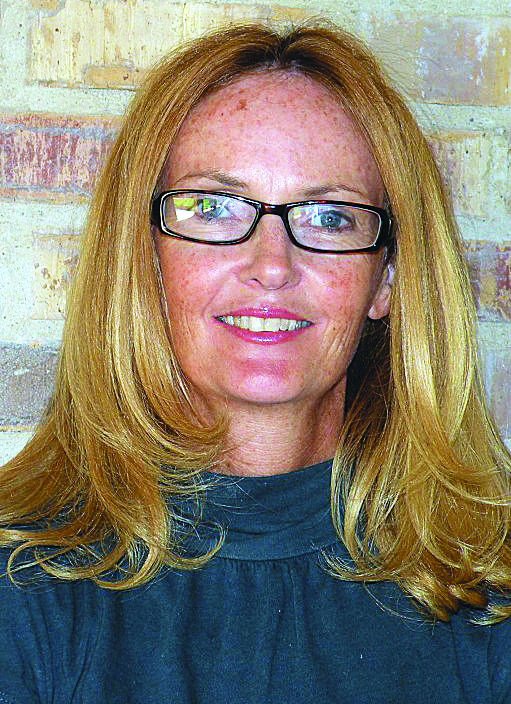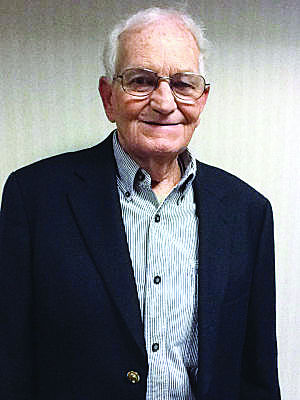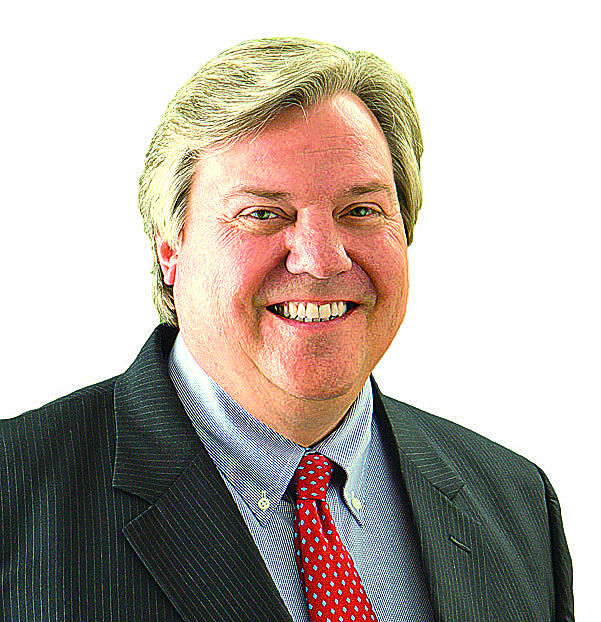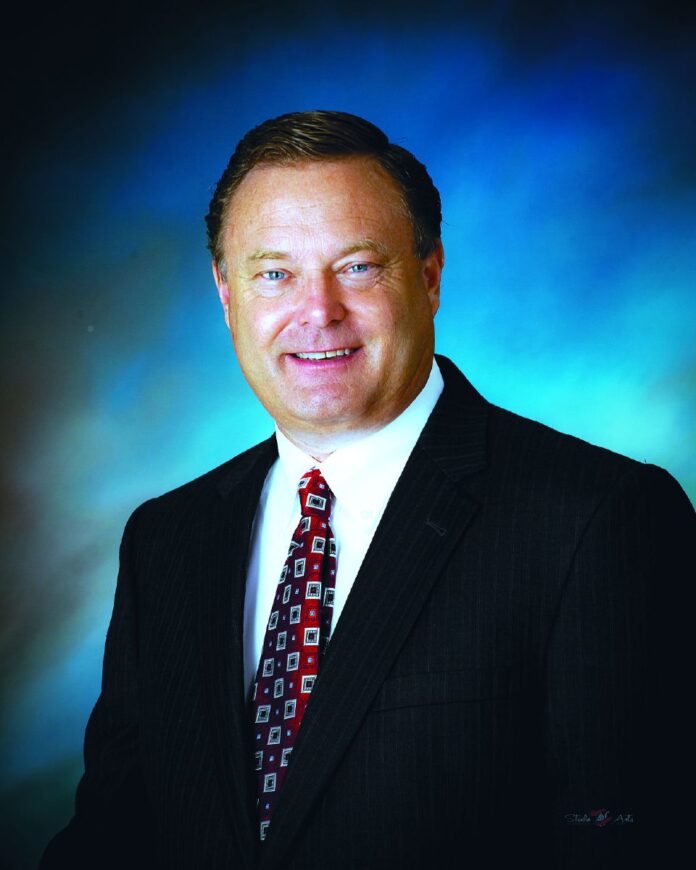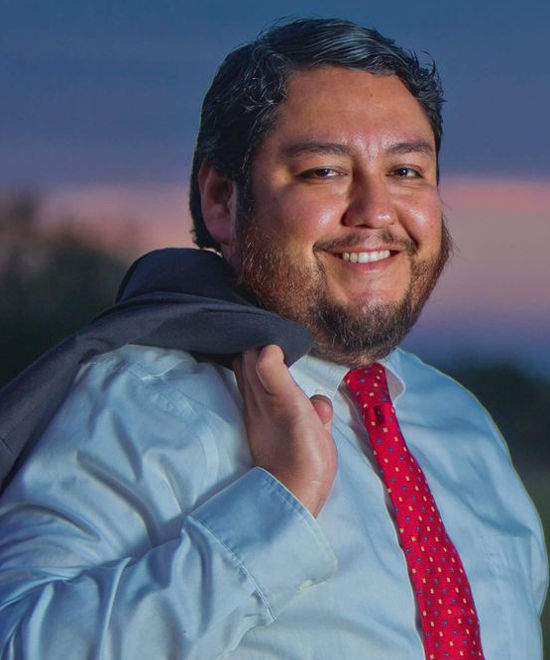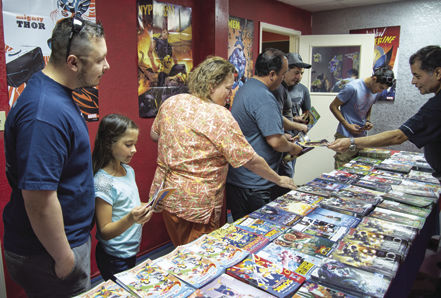On any given day at a number of churches, parks and community centers around Brownsville and Cameron County, you can find groups of men and women gathered to exercise and learn how to improve their health through a program called Tu Salud ¡Si Cuenta! (Your Health Matters!).
I recently dropped in at the large parish hall of Good Shepherd Catholic Church in the Southmost neighborhood in Brownsville. I am greeted by at least 50 women and a few men dancing and sweating to Cumbia music. There are grandmothers and young women with strollers and toddlers and a sweet older couple and everything in between. In front of the class a gregarious instructor in her late 40’s, with a contagious smile, encourages everyone to move.
She shouts instructions, laughs and moves through the large crowd making her way to the back where she dances alongside a more reluctant participant, finally encouraging and teasing her to “dance with more feeling.”
By the end of class the same young lady is laughing and helping to put the chairs back in place, drinking water and chatting with the other women. Marcelina “Nina” Martinez gathers the group in a circle and they talk about the importance of making healthy choices, incorporating fruits and vegetables into every meal, drinking water instead of sugary drinks, and hands them healthy recipes. “We come and work out here every day to control our blood pressure and diabetes,” she tells the crowd, “So don’t waste your workout by going home and eating a bunch of pan dulce and soda. Eat some fruit, make a healthy lunch.”
When the “motivational chat” is over, she connects individually with some of the participants, making an appointment with one woman to follow up in her home, and referring a recently widowed elderly gentleman to anther program that will help him manage his diabetes and symptoms of depression. The place feels warm, literally (there are big fans and no AC) and figuratively (supportive and relaxed and very much like a community). Most of the folks in the class don’t necessarily go to church at this parish, but live nearby and know it as the place they come for exercise, and to connect with “Nina the Promotora”. A place of wellness.
There is a small army of unsung heroes like Martinez working amidst us. They are not generally folks who get attention or credit or yield the power of politicians, professors or physicians. But their impact is arguably as great or greater, at a much lower cost. They improve the lives of thousands of families living here in the Valley each year. Some are volunteer, others are paid a very modest amount to provide motivation, connection, screenings, instruction, access and support to folks of all ages and situations.
They focus primarily on health but take a holistic approach to helping families improve their overall quality of life, whether by providing tools for budgeting and healthy grocery shopping, assistance to access the health care system or simply creating opportunities for social support through physical activity, gardening and cooking. They do all this right in the neighborhoods and homes where people live, work, worship and play.
Community Health Workers (CHWs), or “Promotoras,” as they are called here in the Valley, come from the neighborhoods and people they serve. They relate to people in their own language and understand their culture, values and traditions. They don’t necessarily have a lot of formal education, but they do receive many hours of training and ongoing instruction, and take a minimum 160 hour course to become certified as CHWs by the Texas Department of State Health Services.
Martinez shares, “I struggle the same struggles and don’t come off as an expert, but I do have some resources and information people need and want. I think they listen to me and accept me because I listen to them — their barriers are very real. I also deal with my health, finances, and other family issues. I have been able to lose weight over the years, but I’m not thin. I think because I am real and have made some healthy changes they can relate to me. Sometimes we can’t solve every problem but we can give hope and a listening ear.
I do this by going to their home if they want, and by inviting them to connect with their neighbors at activities like exercise groups, walking groups, or nutrition classes. So often people are just isolated and disconnected. My co-workers and I provide blood pressure screenings and help them weigh in to stay accountable and let them know about resources in the community. We have had great results! Over the last 8 years I’ve seen hundreds of people improve their health and I feel like I’ve played a small role in that by empowering them with information, connections and support.”
I’ve had the privilege of working with and around Promotoras like Martinez for over two decades. My first introduction was just out of graduate school with a binational Promotora project focused on bringing prenatal education and breastfeeding support to uninsured pregnant and parenting women on both sides of the border, in Matamoros and Brownsville. In addition to improving the health of the moms and babies, this program saved taxpayers money by getting women into earlier prenatal care to prevent more complicated, expensive drop-in deliveries at local hospitals and helping support and encourage the cost-saving, healthy practice of breastfeeding.
This was a program with a tiny budget that used volunteers but had a huge impact on health and wellbeing in the very poor communities it served. The CHWs were the key to the program because they knew how to enter a home, or church or neighborhood store with respect and understanding, and listen as well as share important information and strategies to improve health. This is a very different experience than going to a doctor or hospital where it can be intimidating and confusing, even for those of us who speak the language of the health care providers and have formal education and health insurance.
Researchers are finally publishing data about the impact of CHWs’ work and the cost savings they contribute to our often very expensive healthcare system. Some of that research is coming out of the Rio Grande Valley. For example, recent studies have shown CHWs are so effective at providing instruction on issues like nutrition and physical activity, particularly with Latino populations with diabetes, they can significantly improve diabetes control and health outcomes related to physical activity, like blood pressure.
Martinez continues, “One of the ladies I visited regularly was hesitant to open the door the first time. Now she calls me and refers her friends and family to our program. She was lonely and isolated when I first met her, depressed and trapped in a violent situation. Her health was in poor shape, but first I had to listen to her more pressing problems, like how she would, and how she could get out of the violent relationship. I connected her with resources and little by little gained her trust. She was able to leave her abuser, which was not easy, and now we can focus on her health. She still struggles to pay for medication, but has started coming to exercise a couple of times a week.
She is better managing her depression and anxiety and she has even lost a few pounds. Each small change she makes gives her confidence to take the next step, and she feels supported by her new community.”
In the Valley, where over 60% of the adult population has no health insurance and lower-cost clinics have over a year waiting list, CHWs can make a huge impact on health.
“When you walk with people on their journey, instead of judging them, you can empower them to make healthy choices.” Wise advise from a Promotora, because Tu Salud ¡Si Cuenta! (Your Health Matters!).
Marcelina Martinez was one of four CHWs from the UT School of Public Health Tu Salud ¡Si Cuenta! Program who traveled to Chicago last year to accept a national CHW Award from the American Association of Public Health. Follow the work of promotoras improving health on the Tu Salud Si Cuenta Facebook page.

